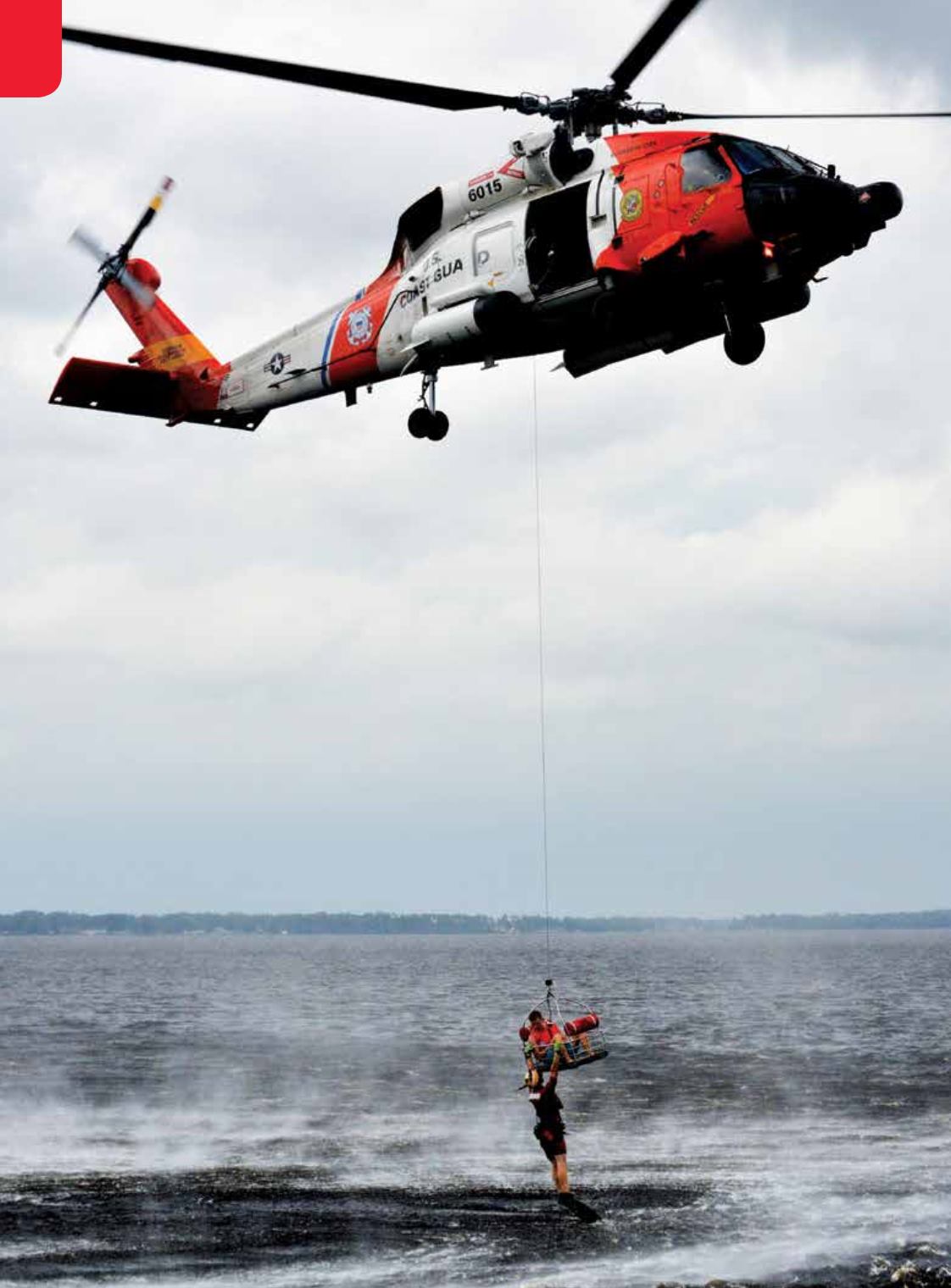

“M
y umbilical is stuck,”
MK1 Michael
Pearsall reports.
“Primary banks
going down,” DV1
Geri Cabrera says
from where she’s monitoring her fellow diver’s air,
communications and depth on the XLDS (Extreme
Lightweight Diving System).
We’re on a Coast Guard pier in Alameda, Calif. It’s
a hot, clear day, and we can see his bubbles about 30
yards out.
“I’m having a hard time breathing. I need some air,”
Pearsall says.
“Tell the diver to go to EGS,” directs team supervisor
DV1 Adonis Kazouris, referring to the emergency gas
system. Cabrera relays the message. Pearsall switches
to the EGS scuba tank on his back instead of the rack
RESEARCH, EDUCATION & MEDICINE
ADVANCED DIVING
46
|
WINTER 2016
RYAN CARPENTER
Always Ready
THE U.S. COAST GUARD DIVING PROGRAM
By David Helvarg
















